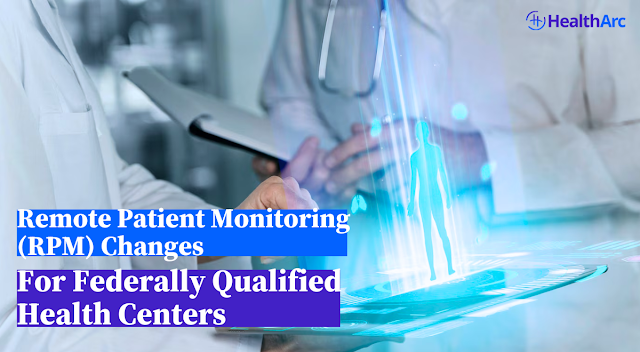How Integrated behavioral Health & RPM Improve Care
Why Integrate Behavioral Health and Physical Care?
The distinction between mental health and physical health continues to blur in healthcare today. Consider the well-documented link between chronic illnesses such as diabetes, heart disease, and COPD, along with mental health conditions like depression and anxiety. These behavioural health issues are capable of complicating health outcomes, especially physical ones, over time. Mentally focusing on these aspects is equally important to achieving the desired outcomes, along with the best treatment plans, and it works efficiently with the use of Integrated Behavioral Health Software in primary and specialty care. It closes gaps in receiving healthcare by providing emotional and mental care in addition to physical care.
What Is Behavioral Health Integration Software?
behavioral Health Integration (BHI) is the software that allows the screening, assessment, and on-going monitoring of mental health issues to be easily woven into a patient's routine healthcare. BHI software integrates behavioral health data into the patient's health record system and gives mental health providers, as well as the primary and secondary care teams, data-driven recommendations as to their workflow.
Some of the features are as follows: communications, coordination, workflow and integrated scheduling, secure follow-up and on-going support channels, and outcome monitoring dashboards to assess treatment progress and effectiveness for evaluation and reporting.
The Importance of Remote Patient Monitoring Services
Remote Patient Monitoring (RPM) services further enhance this model.
With RPM, healthcare providers can monitor patients’ vital signs (blood pressure, glucose, oxygen, and weight) in real time. RPM is more beneficial when combined with behavioral health monitoring since it forms a more holistic profile of the patient.
Let’s take the example of a patient who is managing both diabetes and depression. She would greatly benefit from:
Timely real-time healthcare data streams through RPM-enabled diabetes and hypertension devices.
The integration of behavioral Health Assessments through BHI tools would also greatly benefit her.
The system triggers automated alerts to identify concerning trends in both physical and behavioral monitoring, enabling a proactive response.
What's the Rationale for These System Integrations?
When behavioral health integration software is blended with remote patient monitoring services, the care model shifts from reacting to proactive and preventative approaches. Care teams will no longer wait for problems to escalate but will respond to warning signs, be they emotional triggers or physiological shifts, before the patient requires hospitalization.
This combination also enhances care coordination. Mental health providers, primary care physicians, and other specialists have access to a single, comprehensive view of the patient’s health, which strengthens alignment to shared care plans and goals.
What They Gain from It
Fewer hospitalizations: RPM enhances monitoring and automation. Failure to detect interrelated behavioral and physical health concerns minimizes emergency events.
Improved Compliance: Support for mental well-being increases the likelihood of adherence to medication and other lifestyle modifications recommended by the healthcare professionals when it is integrated into the care plans.
Improved Clinical Relationships: Engagement increases as the patients feel supported in all aspects, thus cultivating the trust and loyalty needed for long-term adherence to treatment.
Improved Operational Efficiency: Consolidation of behavioral and physical health information reduces the time spent by providers on documentation and other administrative tasks, lightening the administrative load of the practice.
Support for the Goals of Value-Based Care:
The combination of the two technologies is in line with initiatives for BHI and RPM as it uplifts value-based care. By achieving better outcomes and preventing avoidable hospitalizations, providers meet the quality benchmarks, which increases the reimbursement rate. In today’s complex healthcare environment, these technologies have become essential, as they aid in managing patients with complex, costly, and high-maintenance healthcare needs.
Challenges and Solutions:
Some providers are concerned about the adoption of the solutions due to changes in the workflow, staff training, or who-pays-for what's used in patient-technology. Modern solutions, such as HealthArc's all-in-one platform, address these concerns.
Simple on boarding for patients guarantees a high adoption rate.
Dedicated training for providers ensures seamless workflow integration.
Adjustable care pathways are designed to accommodate various patient demographic groups.
The Everlasting Integrated Care
In the future, treating all aspects of a person's health, both mental and physical, will be the norm. Patients will be given comprehensive care rather than separate treatments for their mind and body. In the realm of healthcare, combining behavioral Health Integration Software with Remote Patient Monitoring Services will be one step closer to achieving a future where physical and behavioral health are intertwined.
Why HealthArc?
With the accelerated adoption of technology in healthcare, HealthArc is offering integrated RPM behavioral Health Integration Software. Along with Remote Patient Monitoring Services, HealthArc is also offering FDA-cleared RPM devices, real-time analytics, secure communication tools, and customizable dashboards, which makes whole-person care seamless. Additionally, HealthArc's RPM and behavioral Health Integration Software allow for connected and organized care, which is important for managing high-risk patients and moving towards a value-based care model.
At HealthArc.io, learn how HealthArc will empower your practice in embracing this impactful care model.


%20Changes%20for%20Federally%20Qualified%20Health%20Centers%20(1).png)
Comments
Post a Comment